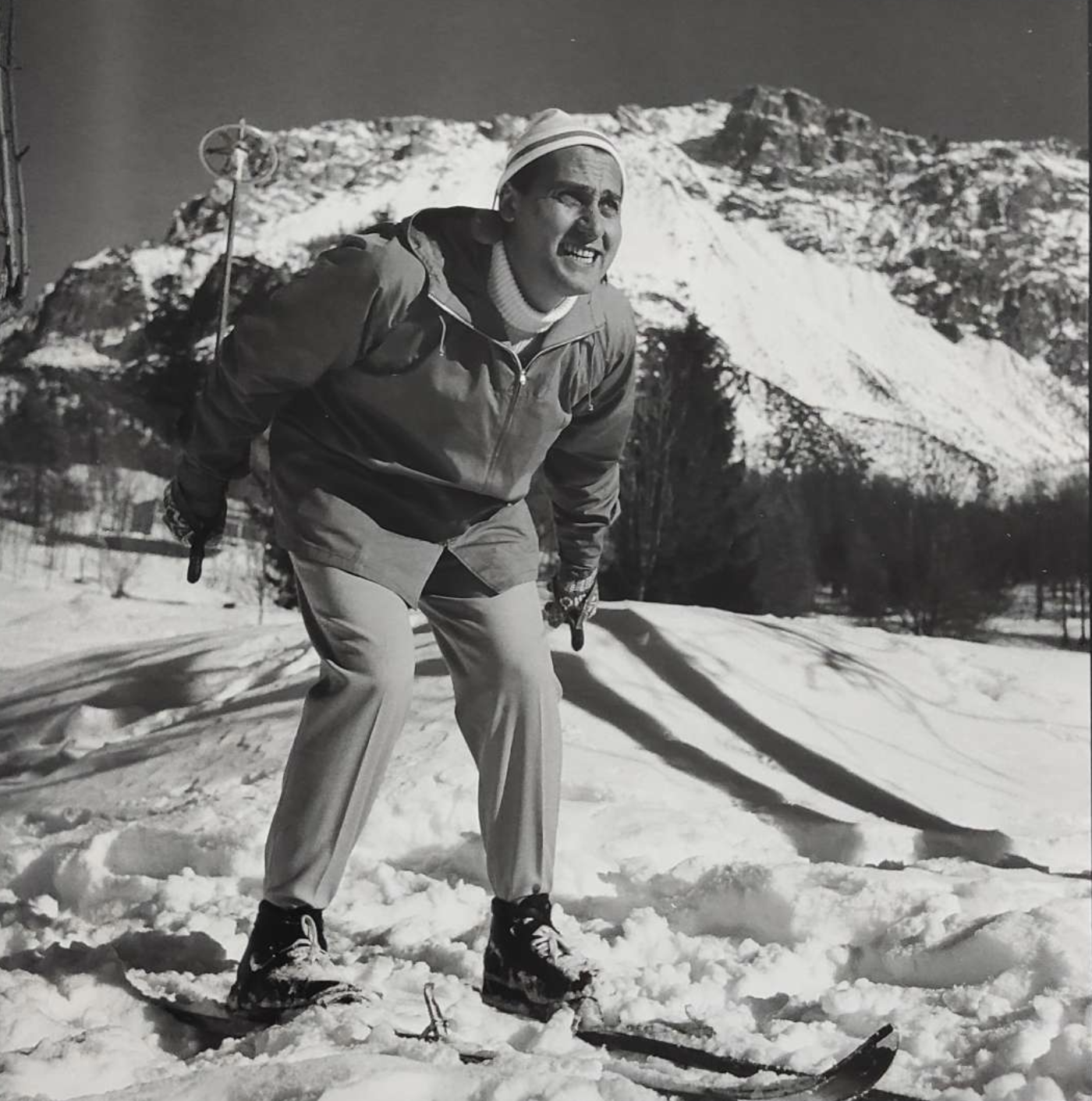12. CORTINA-STYLE COMEDY
HOW ITALIAN CINEMA FOUND ITS WAY TO THE DOLOMITES
location_on Via Pedonale
“How do I get to the station? Is there a chariot?” Alberto Sordi, as Alberto Boccetti, a Roman newsstand owner, or rather Count Max, races down in a sleigh from the Hotel Miramonti to the Cortina station. He’s rushing to catch the first train along the Ferrovia delle Dolomiti railway (closed in 1964 and turned into the pedestrian and cycling path where we stand today). The film is Count Max (1957), directed by Giorgio Bianchi, starring Vittorio De Sica. After the 1956 Winter Olympics, Cortina became ingrained in Italian cinema through a recurring storyline. It’s the tale of the broke man pretending to be rich and noble; or of the bored old money crowd as in Winter Holidays (1959) by C. Mastrocinque; or the nouveau riche determined to buy his way into the spotlight. Cortina became a mirror of the Italian society of the time. The Commedia all’italiana, poking fun at the contradictions of the economic boom, was refreshed two decades later by the Vanzina brothers Carlo and Enrico. Frequent visitors to the Dolomites, they created, starting in 1983, the Vacanze di Natale series: a portrait of the Roman, Venetian, Milanese, Bolognese, Neapolitan bourgeoisie, with lines that became cult classics (from “Via della Spiga – Hotel Cristallo in Cortina: 2 hours 54 minutes 27 seconds… Alboreto is nothing” to “Sun, whisky, and you’re in pole position”). Many of its characters are still popular today, such as Billo (Jerry Calà) and the bisexual scion Covelli (Christian De Sica). It’s not just a matter of holiday comedies. From silent films—The Giant of the Dolomites (1927) by G. Brignone—to Pian delle stelle (1946) by G. Ferroni. From Letto a tre piazze (1960) by Steno to Listen, Let’s Make Love by V. Caprioli (1968), as well as A Place for Lovers (1968) by De Sica, starring Mastroianni and Faye Dunaway, and The Secret of the Old Woods (1993) by E. Olmi, where Paolo Villaggio plays Colonel Procolo from Dino Buzzati’s novel. And again, Villaggio’s cynical humor in Fantozzi in Paradiso (1994) by N. Parenti.
audio_file Read by: Madelyn Renée Emons Audiolibri
12. Cortina-Style-Comedy - Madelyn Renée

Alberto Sordi skiing on the Ampezzo slopes in Count Max, 1959. (Photo by Reporters Associati, Rome)
location_on 46°32'25.7"N , 12°08'10.0"E
Via Pedonale